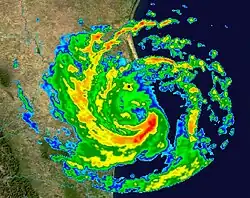Portal:Tropical cyclones
The Tropical Cyclones Portal
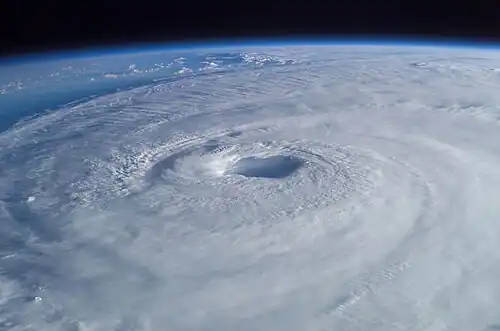
A tropical cyclone is a storm system characterized by a large low-pressure center, a closed low-level circulation and a spiral arrangement of numerous thunderstorms that produce strong winds and heavy rainfall. Tropical cyclones feed on the heat released when moist air rises, resulting in condensation of water vapor contained in the moist air. They are fueled by a different heat mechanism than other cyclonic windstorms such as Nor'easters, European windstorms and polar lows, leading to their classification as "warm core" storm systems. Most tropical cyclones originate in the doldrums, approximately ten degrees from the Equator.
The term "tropical" refers to both the geographic origin of these systems, which form almost exclusively in tropical regions of the globe, as well as to their formation in maritime tropical air masses. The term "cyclone" refers to such storms' cyclonic nature, with anticlockwise rotation in the Northern Hemisphere and clockwise rotation in the Southern Hemisphere. Depending on its location and intensity, a tropical cyclone may be referred to by names such as "hurricane", "typhoon", "tropical storm", "cyclonic storm", "tropical depression" or simply "cyclone".
Types of cyclone: 1. A "Typhoon" is a tropical cyclone located in the North-west Pacific Ocean which has the most cyclonic activity and storms occur year-round. 2. A "Hurricane" is also a tropical cyclone located at the North Atlantic Ocean or North-east Pacific Ocean which have an average storm activity and storms typically form between May 15 and November 30. 3. A "Cyclone" is a tropical cyclone that occurs in the South Pacific and Indian Oceans.
Selected named cyclone -
Typhoon Ewiniar, known in the Philippines as Super Typhoon Ester, was the third named storm of the 2006 Pacific typhoon season and one that lasted for twelve days as a tropical cyclone, moving on a generally northward track. During its lifespan, it affected Palau, Yap, eastern China, the Ryūkyū Islands of Japan, South Korea as well as North Korea, briefly threatening to make landfall in North Korea before doing so in South Korea. Ewiniar is responsible for at least 181 deaths. However, an unofficial report stated that up to 10,000 people had been killed by flooding in North Korea, with 4,000 people missing. (Full article...)
Selected article -
Hurricane Gordon developed during a fourteen-day period along an erratic, persistent, and highly unusual path. The hurricane formed near Panama in the southwestern Caribbean on November 8, 1994. As a tropical depression, it brushed Nicaragua and spent several days in the waters off the country's coast. Strengthening slightly into a tropical storm, Gordon wound its way north into the Greater Antilles. Despite warm waters, persistent wind shear prevented significant strengthening. Executing a slow turn to the north and then the northwest, Gordon made two more landfalls, on eastern Jamaica and eastern Cuba, while delivering tremendous rains to western Hispaniola.
As Gordon made its fourth landfall crossing the Florida Keys, it interacted with a cyclone in the upper-troposphere and a series of cyclonic lows which lent the storm some sub-tropical characteristics. After a few days as an unusual hybrid of a tropical and a subtropical system in the Gulf of Mexico, the storm re-claimed its fully tropical form and made yet another landfall, this time across the Florida peninsula, and continued into the Atlantic Ocean. In the Atlantic, Gordon rapidly strengthened to a Category 1 hurricane. Gordon's characteristic wandering briefly brought it near North Carolina, but ultimately the storm headed south, weakening into a minor tropical storm before making its sixth and final landfall on Florida's east coast. (Full article...)
Selected image -
Selected season -
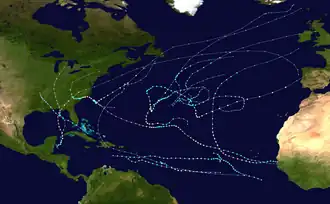
The 2018 Atlantic hurricane season was the third in a consecutive series of above–average and damaging Atlantic hurricane seasons dating back to 2016, featuring 15 named storms, 8 hurricanes, and 2 major hurricanes, which caused a total of over $50 billion (2018 USD) in damages and at least 172 deaths. More than 98% of the total damage was caused by two hurricanes (Florence and Michael). The season officially began on June 1, 2018, and ended on November 30, 2018. These dates historically describe the period in each year when most tropical cyclones form in the Atlantic basin and are adopted by convention. However, subtropical or tropical cyclogenesis is possible at any time of the year, as demonstrated by the formation of Tropical Storm Alberto on May 25, making this the fourth consecutive year in which a storm developed before the official start of the season. The season concluded with Oscar transitioning into an extratropical cyclone on October 31, almost a month before the official end.
Although several tropical cyclones impacted land, only a few left extensive damage. In mid-September, Hurricane Florence produced disastrous flooding in North Carolina and South Carolina, with damage totaling about $24 billion. The storm also caused 54 deaths. About a month later, Hurricane Michael, the first tropical cyclone to strike the United States as a Category 5 hurricane since Hurricane Andrew in 1992, left extensive damage in Florida, Georgia, and Alabama. Michael caused approximately $25 billion in damage and at least 64 deaths. Since Michael reached Category 5 status, 2018 became the third consecutive season to feature at least one Category 5 hurricane. Hurricane Leslie resulted in the first tropical storm warning being issued for the Madeira region of Portugal. Leslie and its remnants left hundreds of thousands of power outages and downed at least 1,000 trees in the Portuguese mainland, while heavy rains generated by the remains of the cyclone caused 15 deaths in France. The storm left approximately $500 million in damage and 16 fatalities. (Full article...)
Related portals
Currently active tropical cyclones
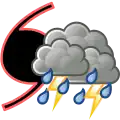
Italicized basins are unofficial.
- East and Central Pacific (2025)
- No active systems
- North Indian Ocean (2025)
- No active systems
- Mediterranean (2025–26)
- No active systems
- South-West Indian Ocean (2025–26)
- No active systems
- Australian region (2025–26)
- No active systems
- South Pacific (2025–26)
- No active systems
- South Atlantic (2025–26)
- No active systems
Last updated: 10:21, 18 August 2025 (UTC)
Tropical cyclone anniversaries
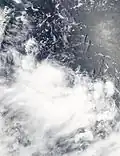
August 17,
- 1969 - Hurricane Camille made landfall on the Mississippian coastline near Waveland with 305 km/h (190 mph) winds, the second-strongest maximum sustained wind speed at landfall of any Atlantic hurricane to strike the contiguous United States. Camille killed over 250 people and caused $1.4 billion in damage.
- 2013 - Tropical Depression Maring (pictured) affects the Philippines by enhancing the southwest monsoon killing 27 people with ₱690 million (US$15.4 million) before intensifying into a tropical storm.
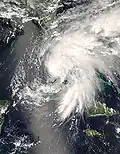
August 18,
- 1983 - Hurricane Alicia made landfall as a Category 3 hurricane near Galveston, Texas. Alicia killed 21 people and caused $2 billion worth of damage.
- 2008 - Tropical Storm Fay (pictured) makes landfall over in Florida where it reached peak intensity overland. Moreover 21 people have perished over in America.
.jpg)
August 19,
- 1972 - Hurricane Celeste passes northeast of Johnston Island, surpassing records such as the highest wind gust and lowest pressure within the island.
- 1991 - Hurricane Bob (pictured) reached its peak intensity with 180 km/h (115 mph) winds off the east coast of the United States and caused $1.5 billion in damage to New England.
Did you know…
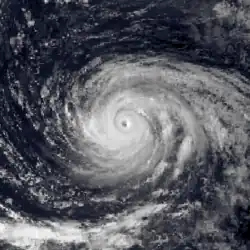
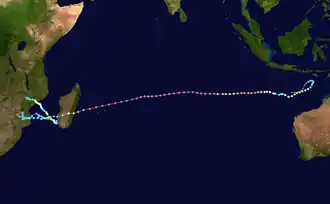

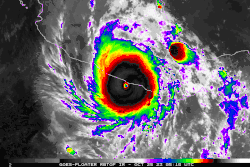
- …that the Joint Typhoon Warning Center considers that Typhoon Vera (pictured) of 1986 is actually two distinct systems, formed from two separated low-level circulations?
- …that Cyclone Freddy (track pictured) in 2023 was the longest-lasting tropical cyclone recorded?
- …that the typhoons of 2024—Yinxing, Toraji, Usagi, and Man-yi (pictured)—made history as the first recorded instance since 1951 of four tropical cyclones coexisting in November?
- …that Hurricane Otis (pictured) in 2023 was the first Pacific hurricane to make landfall at Category 5 intensity and surpassed Hurricane Patricia as the strongest landfalling Pacific hurricane on record?
General images -
 Featured list -
Featured list -

The 2019 Atlantic hurricane season was an event in the annual tropical cyclone season in the north Atlantic Ocean. It was the fourth consecutive above-normal Atlantic hurricane season. The season officially began on June 1, 2019, and ended on November 30, 2019. These dates, adopted by convention, historically describe the period in each year when most tropical systems form. However, storm formation is possible at any time of the year, as demonstrated in 2019 by the formation of the season's first named storm, Subtropical Storm Andrea, on May 20. The final storm of the season, Tropical Storm Sebastien, transitioned to an extratropical cyclone on November 25.
The National Oceanic and Atmospheric Administration's 2019 seasonal outlook called for 10–17 named storms, including 5–9 hurricanes and 2–4 major hurricanes. Altogether, the season produced 18 named storms, including six hurricanes of which three intensified into major hurricanes. Two major hurricanes, Dorian and Lorenzo, became Category 5 storms, causing the season to become the fourth consecutive with at least one Category 5 hurricane. Dorian inflicted catastrophic damage across the Bahamas. The hurricane killed at least 70 people and caused at least US$3.4 billion in damage, making it the costliest hurricane in the country's history. While Lorenzo did not affect land as a Category 5 hurricane, it caused US$367 million in damage and killed 19, with over half of the deaths being attributed to the sinking of a tugboat known as the Bourbon Rhode. In March 2021, the name Dorian was retired from reuse in the North Atlantic by the World Meteorological Organization. (Full article...)
Topics
Subcategories

Related WikiProjects
WikiProject Tropical cyclones is the central point of coordination for Wikipedia's coverage of tropical cyclones. Feel free to help!
WikiProject Weather is the main center point of coordination for Wikipedia's coverage of meteorology in general, and the parent project of WikiProject Tropical cyclones. Three other branches of WikiProject Weather in particular share significant overlaps with WikiProject Tropical cyclones:
- The Non-tropical storms task force coordinates most of Wikipedia's coverage on extratropical cyclones, which tropical cyclones often transition into near the end of their lifespan.
- The Floods task force takes on the scope of flooding events all over the world, with rainfall from tropical cyclones a significant factor in many of them.
- WikiProject Severe weather documents the effects of extreme weather such as tornadoes, which landfalling tropical cyclones can produce.
Things you can do
 |
Here are some tasks awaiting attention:
|
Wikimedia
The following Wikimedia Foundation sister projects provide more on this subject:
-
Commons
Free media repository -
Wikibooks
Free textbooks and manuals -
Wikidata
Free knowledge base -
Wikinews
Free-content news -
Wikiquote
Collection of quotations -
Wikisource
Free-content library -
Wikiversity
Free learning tools -
Wikivoyage
Free travel guide -
Wiktionary
Dictionary and thesaurus
-
 List of all portals
List of all portals -

-

-

-
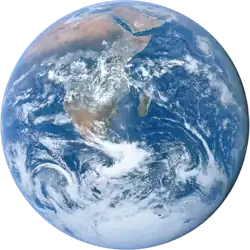
-

-

-

-

-

-
 Random portal
Random portal -
 WikiProject Portals
WikiProject Portals
.jpg)
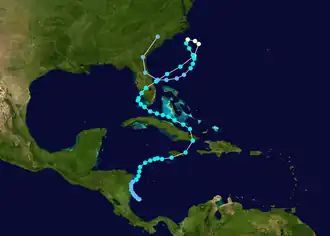




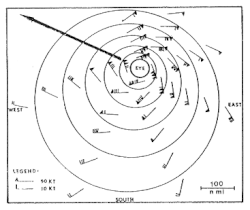
.jpg)

.jpg)




.png)


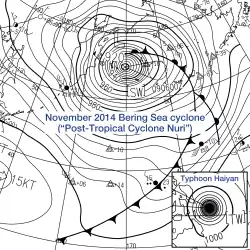


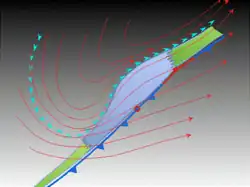
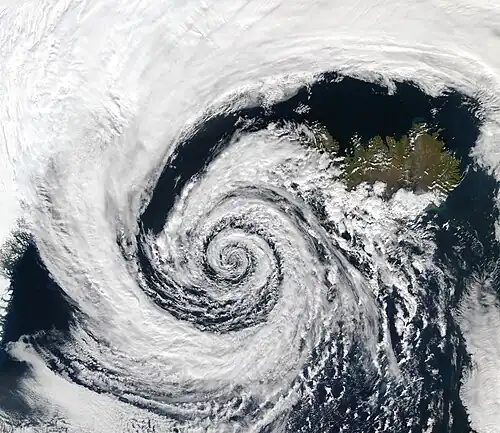
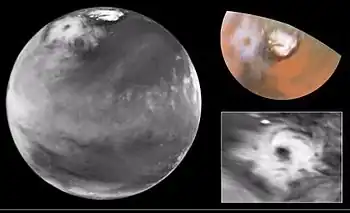
_(50).jpg)
_(cropped).jpg)
